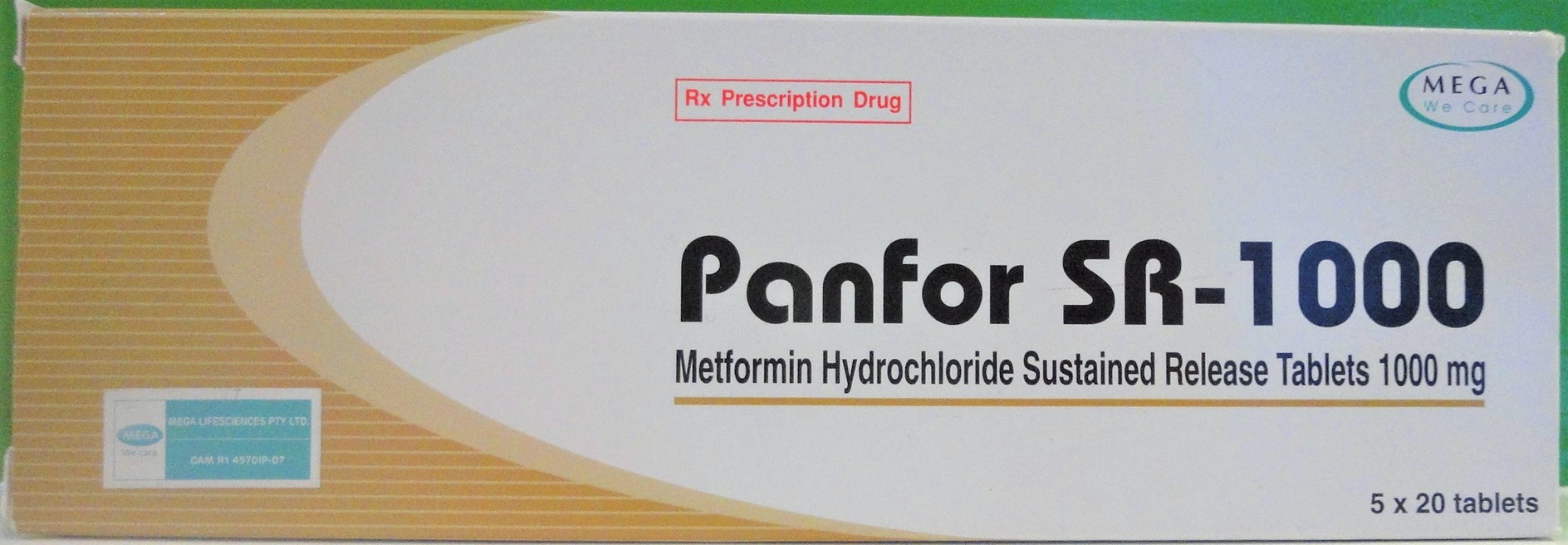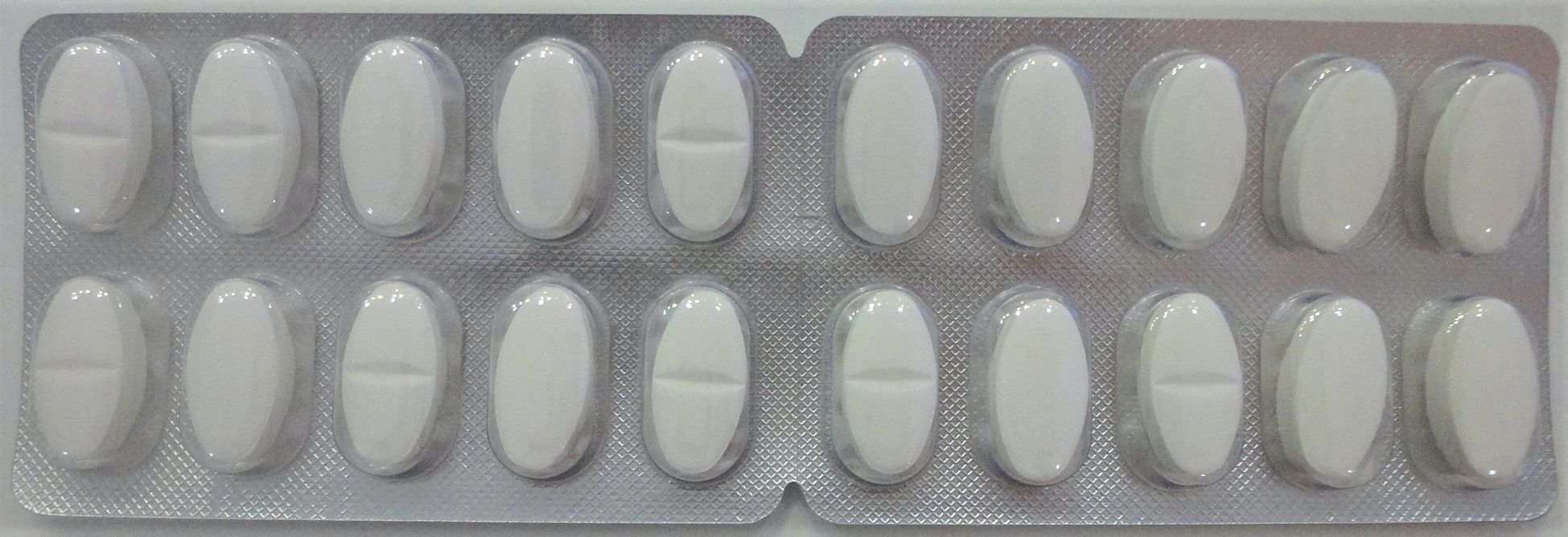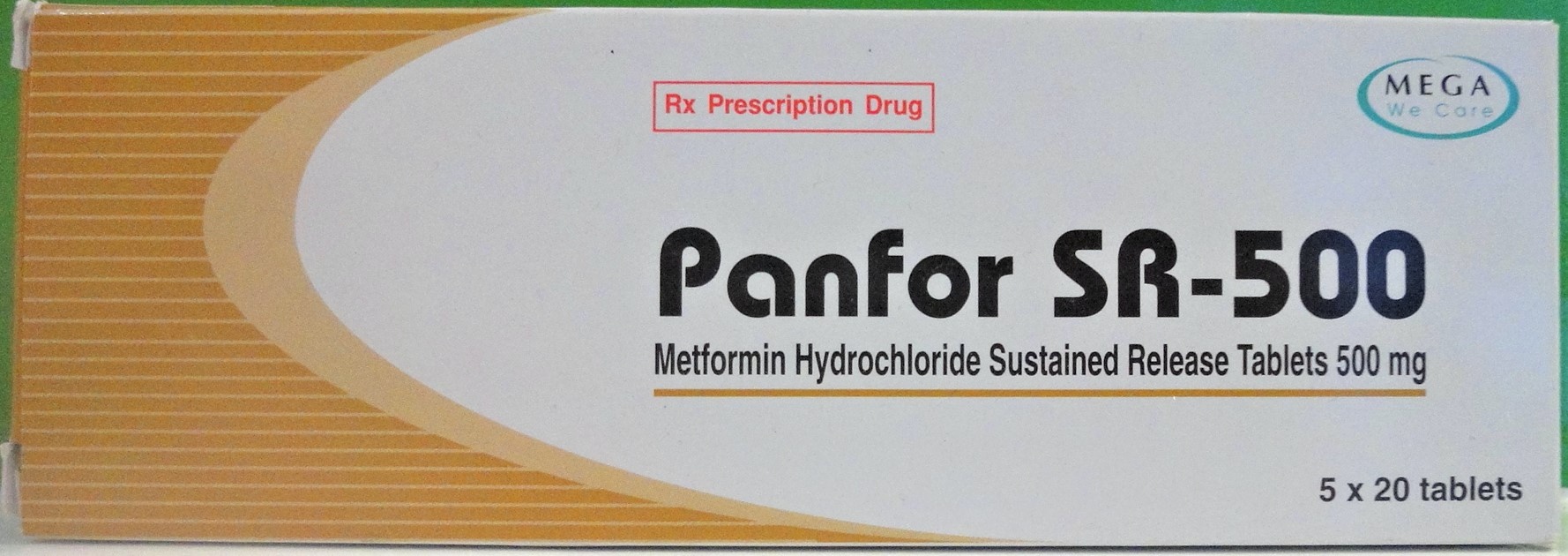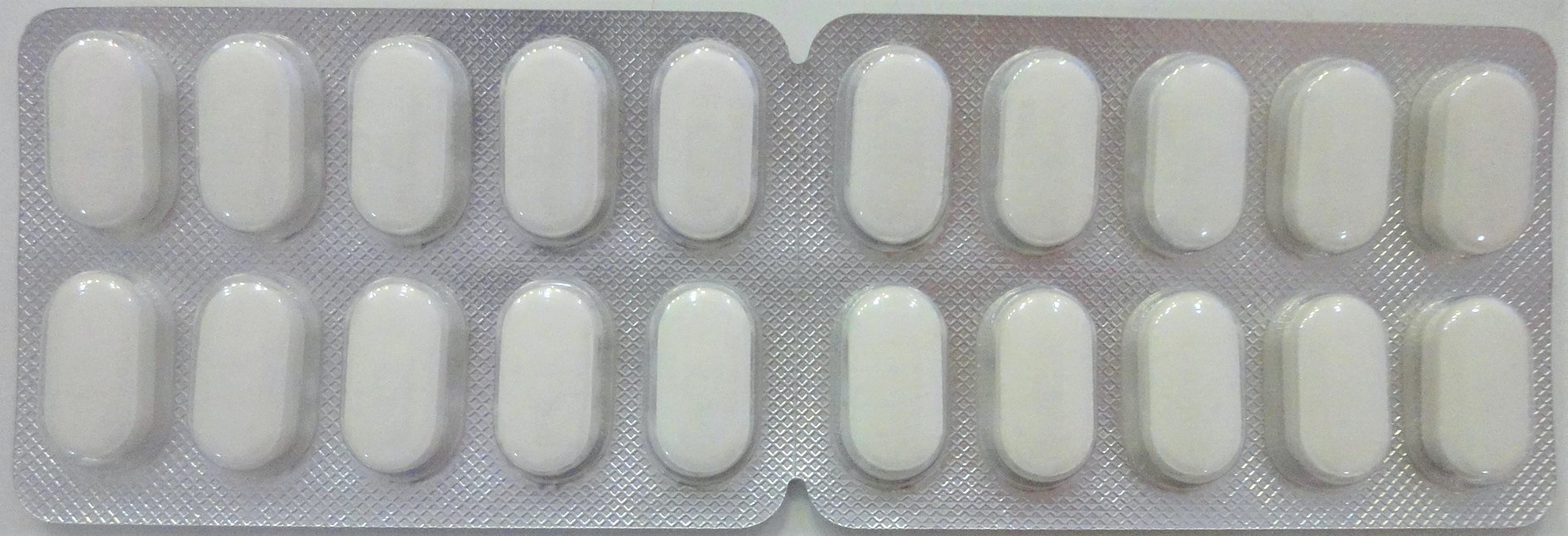PANFOR SR Tablet
ក្រុមហ៊ុនផលិតឱសថ:
INVENTIA HEALTHCARE PVT.LTD.
India
ក្រុមហ៊ុនចែកចាយឱសថនៅប្រទេសកម្ពុជា:
MEGA We care




- សារធាតុសកម្ម
- ប្រសិទ្ធិភាពព្យាបាល និង កម្រិតប្រើប្រាស់
- ហាមប្រើ
- ផលរំខាន
- អន្តរប្រតិកម្ម
- ស្ត្រីមានផ្ទៃពោះ និង ស្ត្រីបំបៅដោះកូន
- ការប្រុងប្រយ័ត្នជាពិសេស
- សកម្មភាពឱសថ បរិយាយប័ណ្ណឱសថ
-
សារធាតុសកម្ម
-
ប្រសិទ្ធិភាពព្យាបាល និង កម្រិតប្រើប្រាស់
Indication:
In maturity onset (non-insulin dependent) obese diabetics and juvenile diabetics in whom diet alone has failed as monotherapy or in combination with insulin, glitazones or sulfonylureas. Also as an adjunct to diet and exercise to improve glycemic control in patients with type 2 diabetes.
Glitazones are used in combination with Metformin hydrochloride when glycemic controls is poor on Metformin hydrochloride monotherapy and maximum tolerated dose (preferable) of Metformin hydrochloride has been tried. The combination of glitazone plus Metformin hydrochloride is preffered to glitazone plus sulfonylurea, particularly for obese patients.
Dosage of Panfor SR must be individualized on the basis of both effectiveness and tolerance in patients. The maximum recommended daily dose of 2000mg should not be exceeded.
The drug should be started at a low dose, with gradual dose escalation, both to reduce gastrointestinal side effects and to permit identification of the minimum dose required for adequate glycemic control of the patient.
During treatment initiation and dose titration, fasting plasma glucose should be used to determine the therapeutic response to the drug and identify the minimum effective dose for the patient. Thereafter, glycosylated hemoglobin should be measured at intervals of approximately three months. The therapeutic goal should be to decrease both fasting plasma glucose and glycosylated hemoglobin levels to normal or near normal by using the lowest effective dose.
Short-term administration of the drug may be sufficient during periods of transient loss of blood glucose control in patients usually well-controlled on diet alone.
The usual starting dose of Panfor SR is 500mg once daily with the evening meal. Dosage increase should be made in increments of 500mg weekly, up to a maximum of 2000mg once daily with the evening meal. If glycemic control is not achieved on 2000mg once daily, trial of 1000mg twice daily should be considered.
The tablet should be swallowed whole and not to be chewed. The tablet should be taken after meals.
-
ហាមប្រើ
Renal or hepatic failure, alcoholism, NIDDM complicated by severe ketosis and acidosis, diabetic precoma and coma, patients undergoing surgery, after severe trauma or during infections, chronic obstructive pulmonary disease, coronary heart disease, cardiac failure, peripheral vascular disease, pregnancy, hypoglycemia and know hypersensitivity to Metformin.
-
ផលរំខាន
Gastrointestinal disturbances: nausea, diarrhoea, gastric pain, constipation, vomiting, metallic taste in mouth.
Dermatological effects: rash, pruritis, urticaria, erythema and flushing.
Miscellaneous: headache and dizziness. Impaired gastrointestinal absorption of vitamin B12 and folic acid has been associated with long term Metformin hydrochloride therapy.
-
អន្តរប្រតិកម្ម
Drug interactions of Metformin hydrochloride is seen with phenprocoumon, hyperglycemic agents (e.g., Thiazides, corticosteroids), alcohol, furosemide, nifedipine and cationic drugs (amiloride, digoxin, morphine, procainamide, quinidine, quinine, ranitidine, triamterene, trimethoprim, cimetidine and vancomycin). Acarbose and guar gam may reduce the absorption of Metformin hydrochloride.
-
ស្ត្រីមានផ្ទៃពោះ និង ស្ត្រីបំបៅដោះកូន
Lactation: Studies have not been conducted in nursing mothers, but caution should be exercised in such patients, and a decision should be made to discontinue nursing or to discontinue the drug, taking into account the importance of the drug to the mother.
-
ការប្រុងប្រយ័ត្នជាពិសេស
WARNING
Lactic acidosis is a rare, but serious metabolic complication that can occur due to Metformin hydrochloride accumulation. The reported incidence of lactic acidosis during Metformin hydrochloride of lactic acidosis during Metformin hydrochloride treatment is lower than 0.1 case per 1000 patient-years, and the mortality risk is even lower.
Lactic acidosis is a medical emergency that must be treated in a hospital setting. In a patient with lactic acidosis, the drug should be discontinued immediately and general supportive measures promptly instituted.
Adjust dose according to blood glucose levels during the first few months.
Lactation: Studies have not been conducted in nursing patients, and a decision should be exercised in such patients, and a decision should be made to discontinue nursing or to discontinue the drug, taking into account the importance of the drug to the mother.
Pediatric use: Safety and effectiveness in children has not been established.
Geriatrics: As aging is associated with reduced renal function, care should be taken in dose selection and should be based on careful and regular monitoring of renal functions.
-
សកម្មភាពឱសថ
In maturity onset (non-insulin dependent) obese diabetics and juvenile diabetics in whom diet alone has failed as monotherapy or in combination with insulin, glitazones or sulfonylureas. Also as an adjunct to diet and exercise to improve glycemic control in patients with type 2 diabetes.
Glitazones are used in combination with Metformin hydrochloride when glycemic control is poor on Metformin hydrochloride monotherapy and maximum tolerated dose (preferable) of Metformin hydrochloride has been tired. The combination of glitazone plus Metformin hydrochloride is preferred to glitazone plus sulfonylurea, particularly for obese patients.
*ព័ត៌មានឱសថត្រូវបានរៀបរៀងដោយ អ៊ីម៉ាតុគឹ មេឌីក (ខេមបូឌា) ដោយផ្អែកលើប្រភពព័ត៌មានខាងក្រោម។ សម្រាប់ព័ត៌មានលម្អិត សូមស្វែងរកនៅក្នុងក្រដាសព័ត៌មាននៃឱសថនីមួយៗ ឬ សាកសួរទៅកាន់ក្រុមហ៊ុនឱសថឬតំណាងចែកចាយនៃឱសថនីមួយៗ។
ប្រភពព័ត៌មាន៖
- ក្រដាសព័ត៌មាននៃឱសថសម្រាប់អ្នកជំនាញវេជ្ជសាស្ត្រដែលប្រើប្រាស់នៅប្រទេសជប៉ុន (Pharmaceutical and Medical Devices Agency, Pmda): https://www.pmda.go.jp
- ព័ត៌មានសង្ខេបនៃឱសថសម្រាប់អ្នកជំងឺដែលប្រើប្រាស់នៅប្រទេសជប៉ុន: http://www.rad-ar.or.jp
